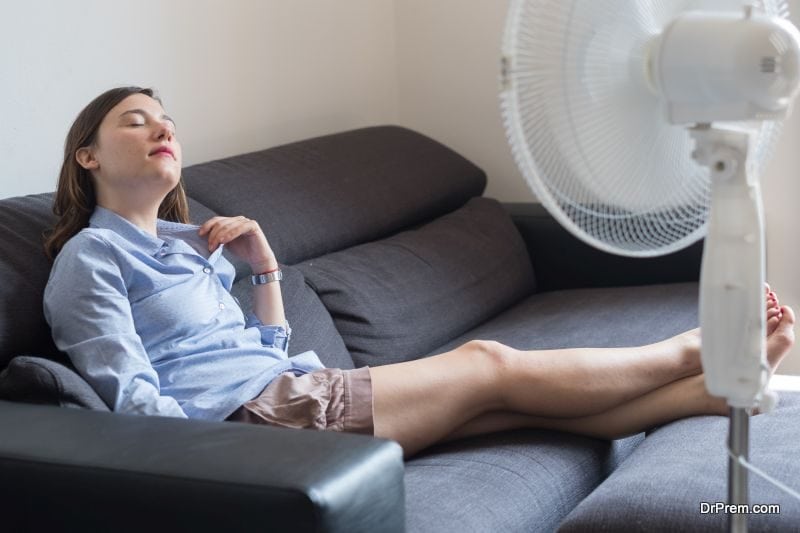When you think of pollutants in the air and how they affect your health and breathing, you likely think only of outdoor air. But the quality of the indoor air you’re breathing is equally important. In fact, it may be more important considering how much time you spend inside your household or office. So how do you monitor the air quality of your indoor space and improve it when needed? And, why does it even matter? Read on to find out.
Why is Indoor Air Quality Important?
 When you’re exposed to poor air quality over time, your body will react in different ways. Some of the most basic physical reactions to poor air quality include:
When you’re exposed to poor air quality over time, your body will react in different ways. Some of the most basic physical reactions to poor air quality include:
- Allergic reactions
- Fatigue
- Headaches
- Eye irritation
If you’re exposed to serious pollutants for an extended period of time, they can actually cause long-term respiratory issues and potentially even cancer. One of the scariest things about exposure to poor indoor air quality is that without these obvious physical reactions, you may never know that you’re at risk. And even clean air can actually cause asthma is normally patient individuals, which makes air quality a serious concern. Another common condition that may be attributed to poor indoor air quality is something called sick building syndrome (SBS). Individuals suffering from SBS become ill for no apparent reason, though it’s believed poor air quality could be to blame.
What Causes Poor Indoor Air Quality?
Several factors can contribute to poor indoor air quality. Here are just a few.
Smoking

It’s no secret that smoking cigarettes is extremely harmful for your health. Not only does it compromise your breathing and lead to a variety of cancers, but it also causes yellowing of the teeth and skin. Unfortunately, even if you don’t choose to smoke yourself, second hand smoke is a silent killer as well. Anyone exposed to someone else’s cigarette smoke is at risk for breathing complications, especially those suffering from asthma. Sadly, second hand smoke affects children as well. Exposure to secondhand smoke can increase a child’s likelihood to experience ear infections and puts them at greater risk for SIDS (Sudden Infant Death Syndrome).
Carbon Monoxide
Most homes are equipped with carbon monoxide detectors and for good reason. This odorless and colorless gas can greatly compromise your breathing. It prevents the body from properly delivering oxygen throughout the body. Because the gas itself is difficult to detect, most people only know they’re at risk once the physical symptoms begin. These include weakness, dizziness, fatigue, headaches, and nausea. Installing a carbon monoxide detector can help prevent this and keep your indoor air quality at a healthy level.
Radon

Radon can enter your home through cracks in the foundation or walls and causes many health complications including lung cancer. Radon is another colorless and odorless gas and is also radioactive. Radon is produced by decaying uranium and can be found in most any soil that surrounds your home. Radon easily enters homes through holes and cracks but can also penetrate concrete. Older homes are more susceptible to elevated radon levels, of which overexposure can be harmful to inhabitants. You can test for radon in your home and take measures to rectify the issue. Radon poisoning can express itself in a variety of ways including:
- Persistent coughing
- Coughing up blood
- Chest pain
- Difficulty breathing
- Wheezing
If you’re experiencing any of these symptoms, your home should be tested for radon.
Dust
All indoor spaces are bound to include a certain level of dust. Many people are allergic to dust and experience sneezing, itchy and watery eyes, and difficulty breathing when exposed to too much dust in the air. You can cut down on indoor dust by eliminating carpets from your space, where dust lives and gets trapped, dust all furniture and floors regularly, and incorporate air purifiers into your home or office. All of these things will help reduce the amount of dust in the air and improve air quality.
How Else Can I Improve My Indoor Air Quality?
Get a Plant
 Plants aren’t simply nice to look at. Incorporating them into your household can actually offer some surprising health benefits, including improved air quality. That’s because indoor plants help reduce the amount of carbon dioxide and nitrogen dioxide in the air. Plants are also responsible for absorbing other air pollutants and dust. Because plants have such a large surface area and are constantly exchanging gases and water, they also help keep the air temperature down and increase humidity. This helps those suffering from asthma or other breathing conditions to breathe easier and avoid drying out. But it’s also important not to place too much humidity into the air either, which can lead to further complications. The ideal humidity level for any indoor space is between 30 and 50%.
Plants aren’t simply nice to look at. Incorporating them into your household can actually offer some surprising health benefits, including improved air quality. That’s because indoor plants help reduce the amount of carbon dioxide and nitrogen dioxide in the air. Plants are also responsible for absorbing other air pollutants and dust. Because plants have such a large surface area and are constantly exchanging gases and water, they also help keep the air temperature down and increase humidity. This helps those suffering from asthma or other breathing conditions to breathe easier and avoid drying out. But it’s also important not to place too much humidity into the air either, which can lead to further complications. The ideal humidity level for any indoor space is between 30 and 50%.
Did you know that indoor plants are also said to boost your mood and overall well-being? That’s because the presence of green, living things creates a more relaxed and productive environment, reducing stress and eliciting feelings of calm and happiness. Plants also absorb background noise, helping to create a quiet and peaceful atmosphere.
Make Routine House Checks
There are a variety of things inside your home that could be compromising your air quality without your knowledge. By performing some basic, routine checks on things like your clothes washer and air conditioner, you can actually improve your indoor air quality exponentially. Be sure to vent your clothes dryer to the outside of your home and empty any drip pans you might have in your window air conditioners or dehumidifiers. These steps will help reduce the amount of humidity in the air, which can lead to moisture build-up and mold. It’s also important to keep your floors clean and dry. This eliminates outside pollutants from getting in or other indoor irritants from building up over time.
Understanding the Dangers
 Sometimes people have a false sense of security when it comes to air quality in their homes. Don’t be fooled into thinking air pollutants only exist outside the four walls of your home or office. There are countless ways that your indoor air quality can be compromised. But understanding the warning signs and precautions for maintaining healthy indoor air quality levels will keep you and your family healthy and safe.
Sometimes people have a false sense of security when it comes to air quality in their homes. Don’t be fooled into thinking air pollutants only exist outside the four walls of your home or office. There are countless ways that your indoor air quality can be compromised. But understanding the warning signs and precautions for maintaining healthy indoor air quality levels will keep you and your family healthy and safe.
Article Submitted By Community Writer



